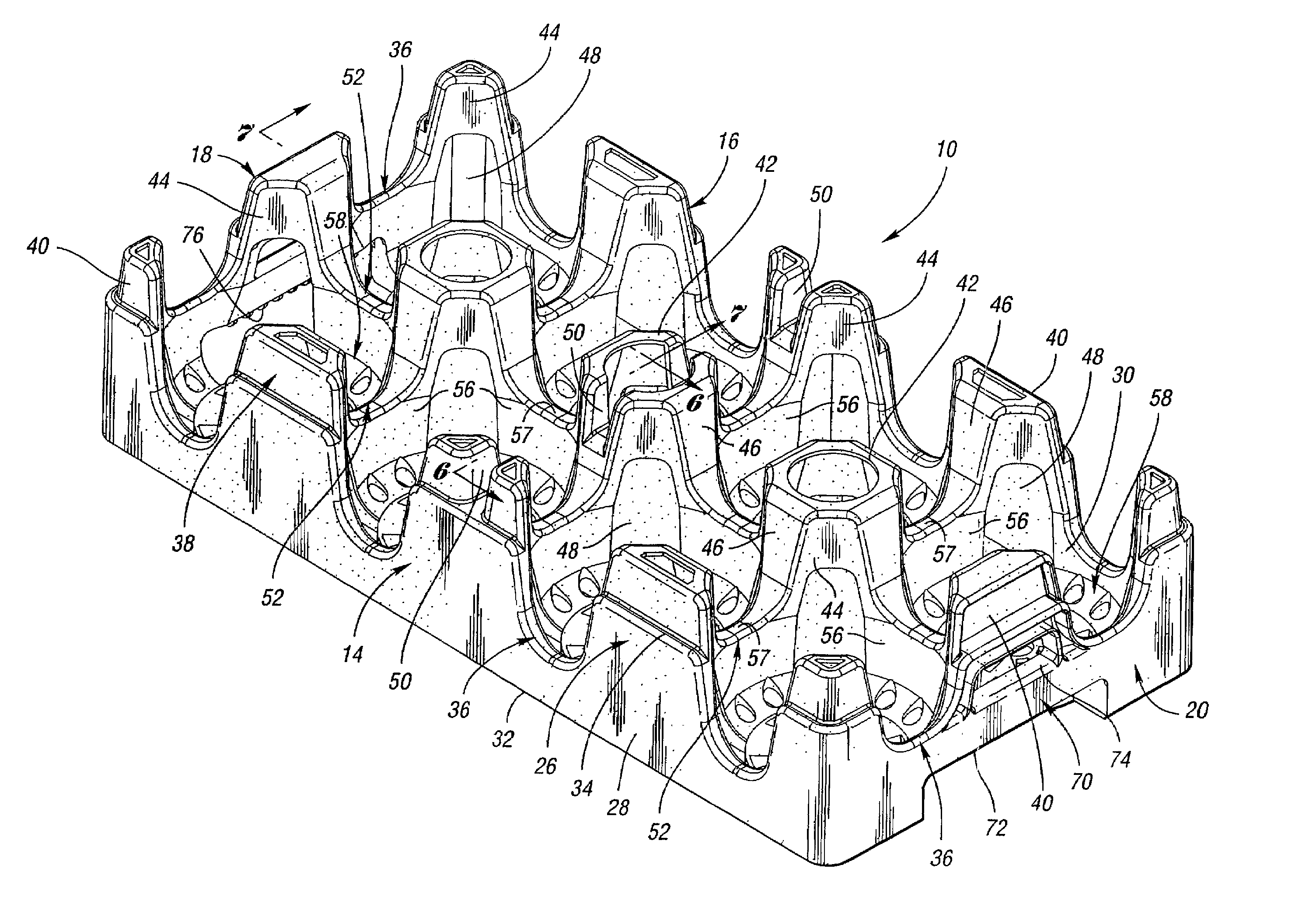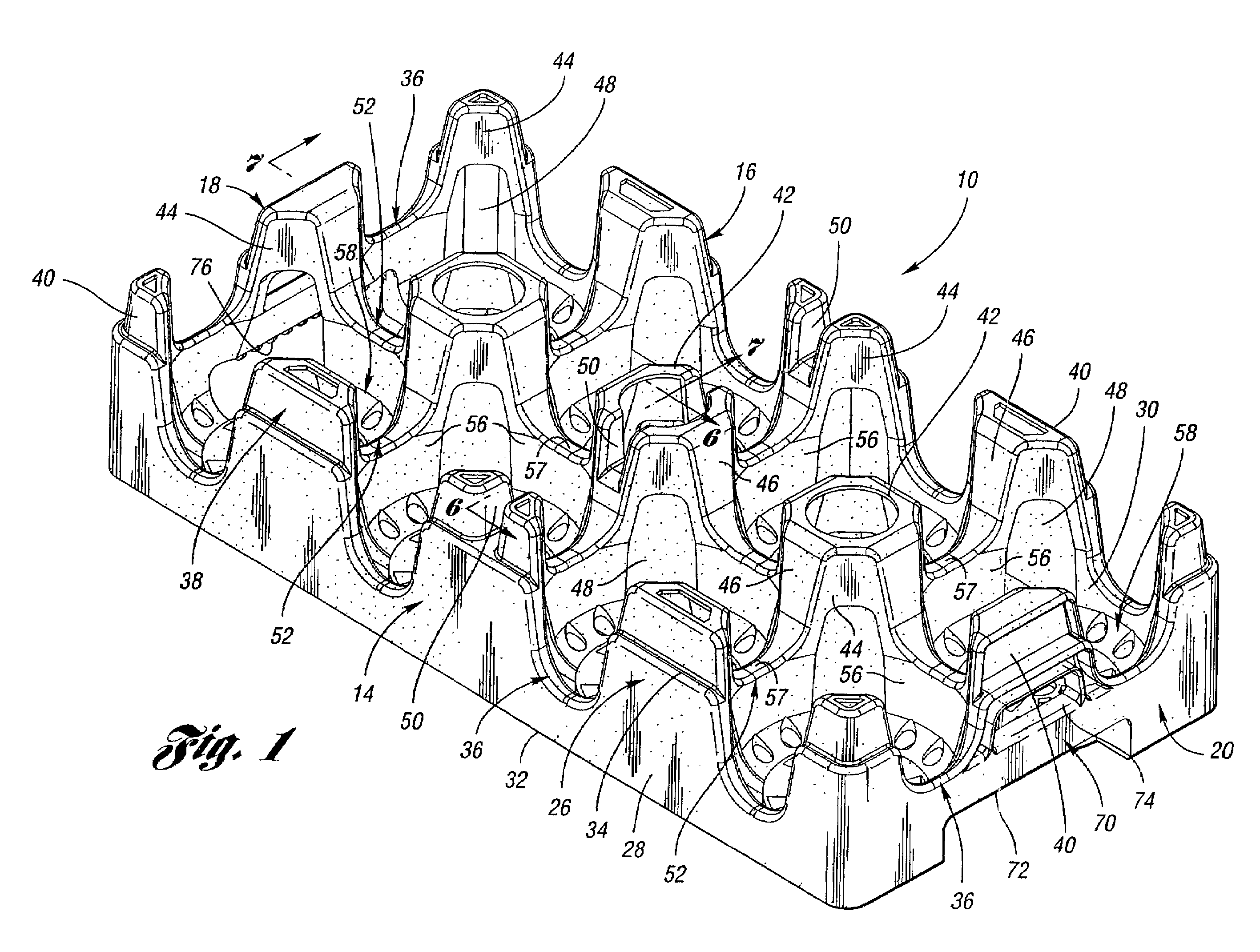Stackable low depth tray
a low-depth, tray technology, applied in the direction of tray containers, internal fittings, transportation and packaging, etc., can solve the problems of bottle buckles, stacking falling, undetectable low limit on the number of tiers, etc., to achieve greater support and stability of the loaded bottles, high strength, and high visibility of bottles
- Summary
- Abstract
- Description
- Claims
- Application Information
AI Technical Summary
Benefits of technology
Problems solved by technology
Method used
Image
Examples
Embodiment Construction
)
[0039]FIGS. 1–5 show several views of a low depth tray 10 according to the present invention. While tray 10 is suited for many uses, tray 10 is particularly suitable for storing and transporting bottles B (see FIGS. 10, 13, and 15). Tray 10 includes a base 12 or floor member (best shown in FIGS. 2–3), a first pair of opposed walls 14, 16, and a second pair of opposed walls 18, 20. For convenience, and without additional limitation, first pair of opposed walls 14, 16 will be referred to herein as side walls, and second pair of opposed walls 18, 20 will be referred to herein as end walls. Side walls 14, 16 and end walls 18, 20 are attached to each other to form a wall structure, and are attached to base 12 and extend upwardly therefrom. Preferably, side walls 14, 16, end walls 18, 20, and base 12 form an integral, unitary member of one-piece construction. Tray 10 is generally symmetric about a longitudinal axis 22 and a transverse axis 24 thereof (see FIG. 2).
[0040]Tray 10 is typical...
PUM
 Login to View More
Login to View More Abstract
Description
Claims
Application Information
 Login to View More
Login to View More - R&D
- Intellectual Property
- Life Sciences
- Materials
- Tech Scout
- Unparalleled Data Quality
- Higher Quality Content
- 60% Fewer Hallucinations
Browse by: Latest US Patents, China's latest patents, Technical Efficacy Thesaurus, Application Domain, Technology Topic, Popular Technical Reports.
© 2025 PatSnap. All rights reserved.Legal|Privacy policy|Modern Slavery Act Transparency Statement|Sitemap|About US| Contact US: help@patsnap.com



